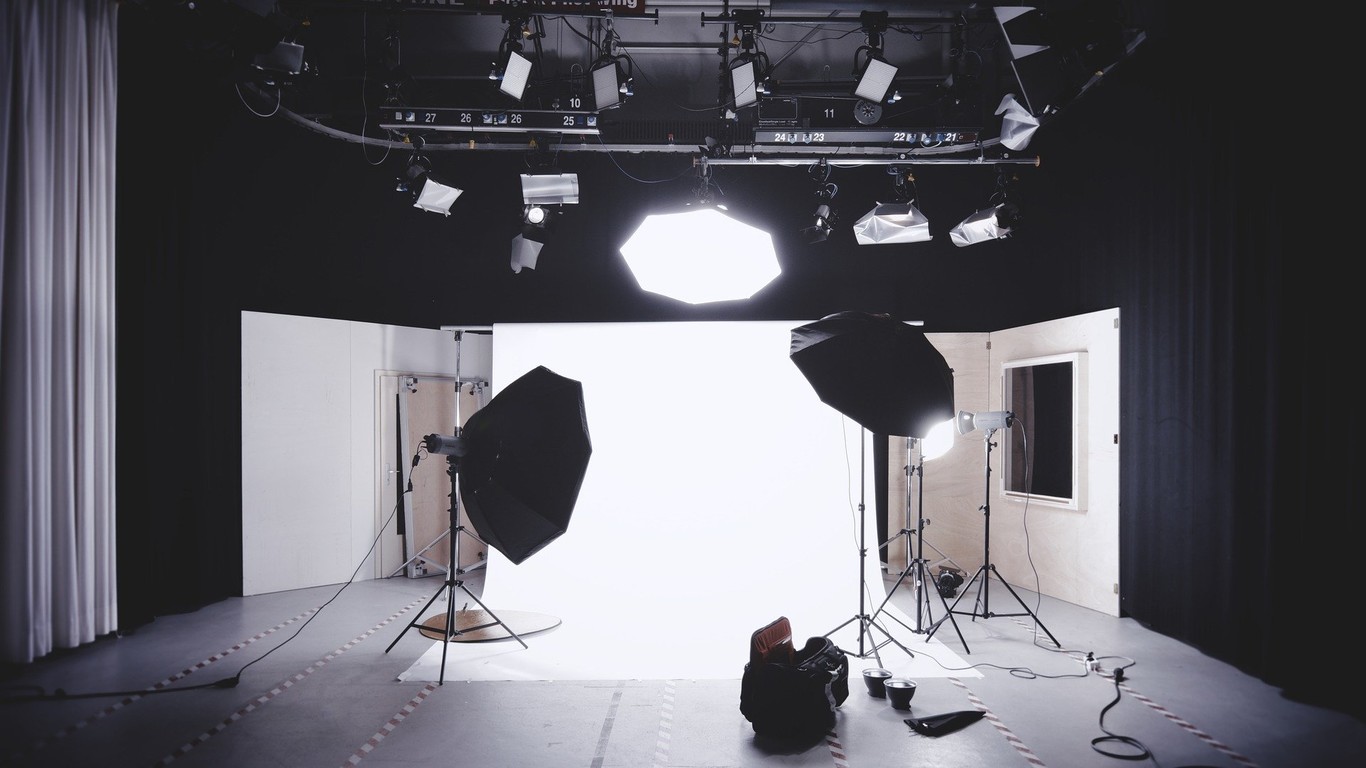
Although we are looking for the phone with the best camera – although we can always resort to classic cameras and camcorders for this task – to take the best possible videos and photos, the result can be overshadowed (literally and figuratively) if we do not have adequate lighting.
It is not a matter of having a home studio, because fortunately, many alternatives allow us to record home videos with adequate and attractive lighting. In this lighting guide to recording videos at home, we review the main alternatives with their respective strengths and weaknesses.
Shedding some light on lighting
Light power, and color temperature… are some common concepts that we use when choosing any light bulb, and now it is great for us to have them clear so that our lighting setup meets our needs.
In a light bulb of any type, the light output (actual lumens) refers to how much light it gives us. In this sense, it is not the same to need a bulb to provide ambient light as to use it as an alternative to a spotlight.
How to calculate it? Taking into account the Lumen/w efficiency, which is usually between 40Lm/w and 90Lm/w, we can estimate it with this simple formula:
If we bet on a bulb that does not change color, it is interesting to know what color temperature they offer, measured in Kelvin: if it is around 3,000K it will be a warm white bulb, at 4500K it is pure white and 5800K is about cool white. And if it changes, we are interested in covering that spectrum of temperatures to have versatile lighting.
However, some connected light bulbs also allow you to adjust their intensity and even offer RGB lighting, two functions that can be useful depending on the effect you want to create.
It is also important to know the opening angle of the light: those with a closed opening angle provide a very localized light, but if the fan goes from 80 to 120 degrees, the light will be more widespread.
A parameter used in photo and video lighting to evaluate its quality is the CRI, from the English Color Rendering Index. This value allows us to know how faithful the focus is when it comes to reproducing the range of colors of a scene according to the human eye.
Although sunlight or that provided by incandescent materials (such as tungsten or halogen lamps) are capable of emitting all the colors of the spectrum (in all wavelengths), fluorescent lamps and LEDs are not capable of doing so. As a consequence, this affects how we perceive the color of the objects that are under its illumination.
The CRI scale goes from 0 to 100, the latter being the ideal value (that of the sun). To get used to the idea, some good professional lights are around 90, and below 90 the light is not of quality for this use scenario.
Home video recording lighting
Recording video at home we are going to find essentially three scenarios of use: the close-up, widely used in video calls or to record speeches such as courses, general and product plans.
Whatever your case and you have different budgets, these are the advantages and limitations of lighting to record home video.
As a general rule of lighting, we will always seek to have a scene with sufficient light so that the device in charge of recording is capable of capturing colors and details, which allows us to capture the volume so as not to lose nuances, avoiding at all costs hard shadows in key places such as faces and that light can grant more or less relevance depending on the plane in which the different objects are located.
Natural lighting
Natural lighting is the easiest and cheapest way to shoot video at home, especially for those close-up shots. It also offers great results if you know how to take advantage of it and take into account that the sun moves continuously, consequently, your light source changes position.
The goal is for shots to look evenly lit and (relatively) free of shadows.
To do this, it is best to choose a well-lit place – the lighter, the better – and position ourselves with the light source directed towards us, trying to make it as uniform as possible, since if we stand to one side, shadows will be generated (and we would have to counteract them with another point of light or with a reflector, which you can make yourself with aluminum foil).
Be careful because we are not interested in the light is strong, but rather it favors more when it is soft. In this sense, a blind can help to soften and spread it.
We are not always going to have a large window with access to sunlight, a favorable day, or a space to situate ourselves right in front of the window. But there are other very successful low-cost solutions.
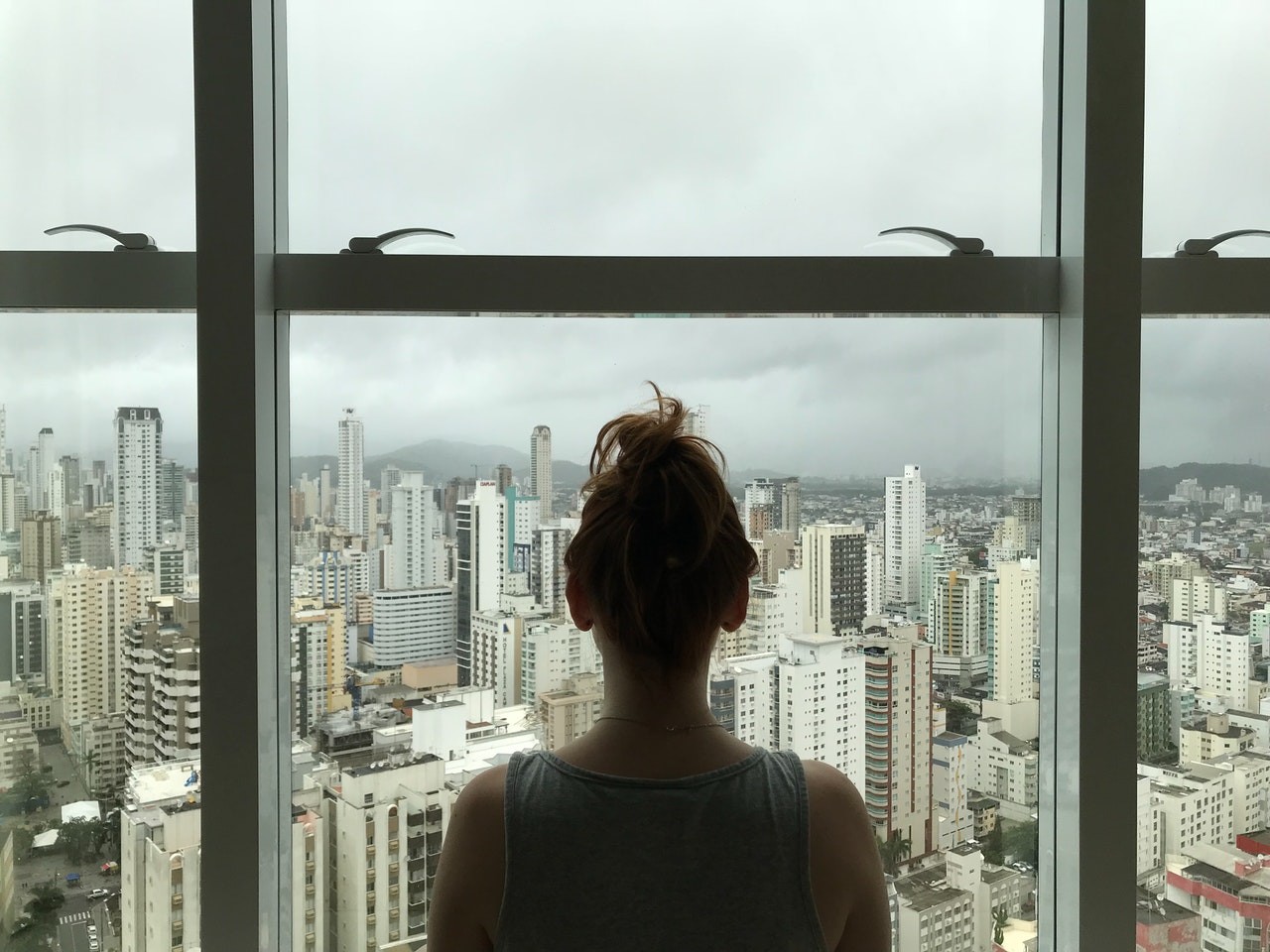
Using a couple of lamps
A versatile and relatively low-cost alternative to improve spaces with little or bad lighting is to have a couple of lamps with their corresponding bulbs.
The good thing is that it is not difficult to have a couple of lamps at home and that, in addition to using them for sporadic video recording, they will be useful for our day-to-day.
The idea is to place both lamps (ideally they are the same) in front of you, just behind the device that you are going to use to record, arranged symmetrically placed at 45 degrees.
The goal again is to achieve soft diffused light, something shaded lamps help. The lamps, on the other hand, create intense points of light, useful in close-ups but “dangerous” due to that direct light that can be harsh.
However, the versatility of the connected light bulbs makes them the best candidates in this segment, we are referring to the dimmable models with RGB lighting. Without going any further, here you can see a few tricks from Philips Hue ( 82 euros for the pack of two colored bulbs) for product photography.
Rings of light
If the user is going to be exclusively selfie photos and close-up videos, the light ring is a good low-cost alternative framed in the input range, that is, for sporadic use.
This gadget consists of a circular light, so it offers uniform lighting right in the area in front of them (your face), thus mitigating the most pronounced shadows and providing an attractive point of light in the eyes.
Apart from the usual characteristics of light (which we have seen in the previous point), we can find light rings of different diameters and ways of fixing them.
There are some with a built-in tripod, others that allow their integration into third-party tripods, and the smallest, which can be attached to the phone itself. It is important to look at the fixing system and how robust it is, since we do not want there to be any looseness or even the phone to come loose and fall to the ground
They are a success if we are clear about their use scenario since they will fall short to illuminate a room. The most affordable models offer more of a “regular” light, although it will depend on our expectations.
SYOSIN
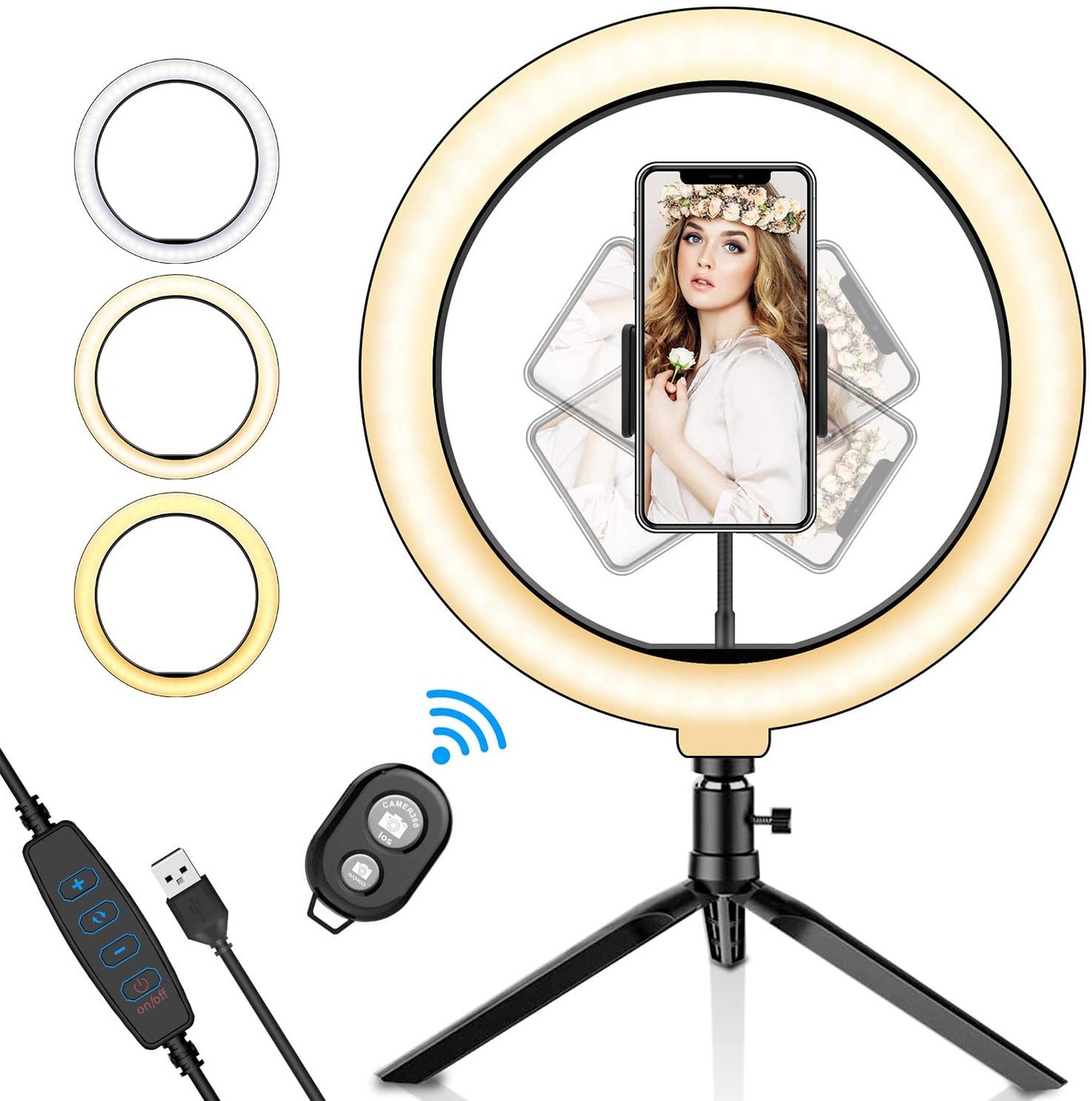
For those who record from their mobile and are looking for something simple and cheap, this one from SYOSIN ( 13.99 euros ) has a diameter of 10.2″, it comes with a mini-tripod where you can insert the phone and a remote to shoot. Despite how affordable That is, it has three light modes and 11 brightness levels.
Yoozon
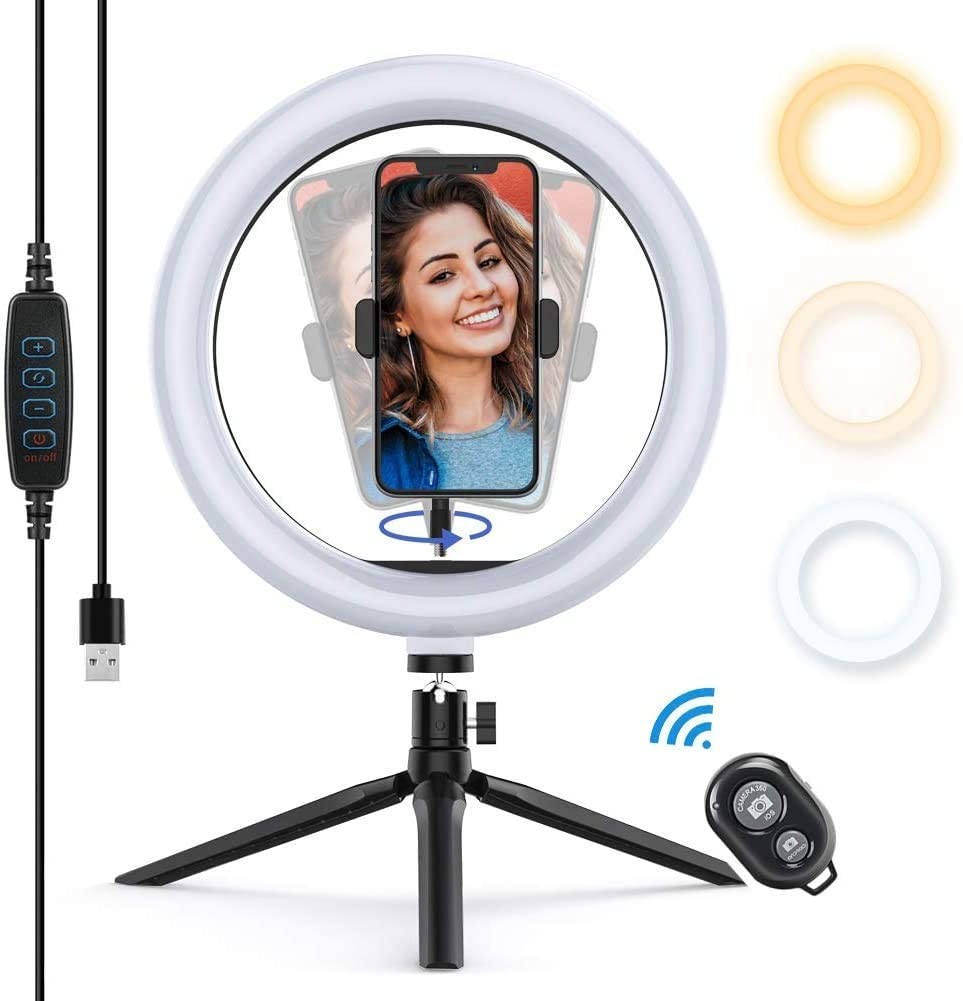
Another very similar alternative both in terms of features and size is this one from Yoozon ( 9.99 euros ), also with a universal rotating support to fix the mobile on the mini-tripod and a wireless shutter release.
Neewer
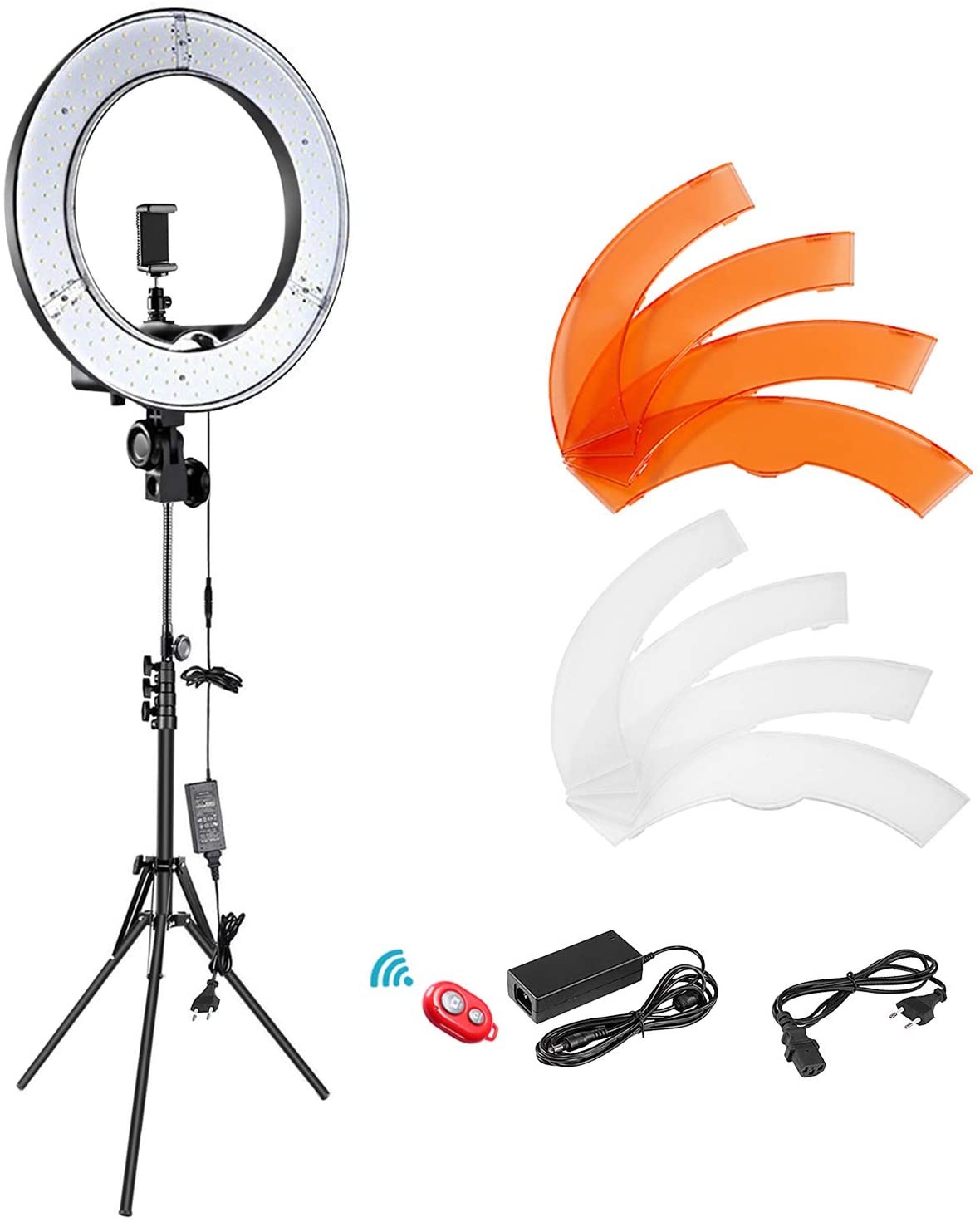
If we need a larger and more powerful ring, this one from Neewer ( 87 euros ) is 14″ and offers a powerful 36″ light and 5500K temperature with robust support and a large tripod, so that you can place it on the ground. It comes with several filters and a clip that supports not only mobiles but also SLR cameras.
LED lights
For those who outgrow the ring of light, we go up a step to LED spotlights. Its price is higher than selfie rings, but in return, they are more specific and deliver a more uniform light.
In this sense, their greater lighting capacity causes them to sometimes create harsh lights, as happens with torches, so it is recommended to use a diffuser to soften them.
Likewise, the use scenario of LED spotlights is identical to that of rings: selfies and video recording over short distances in static, since they consist of a foot or tripod so that they remain fixed where we need them.
Yongnuo Yn300 Air Pro
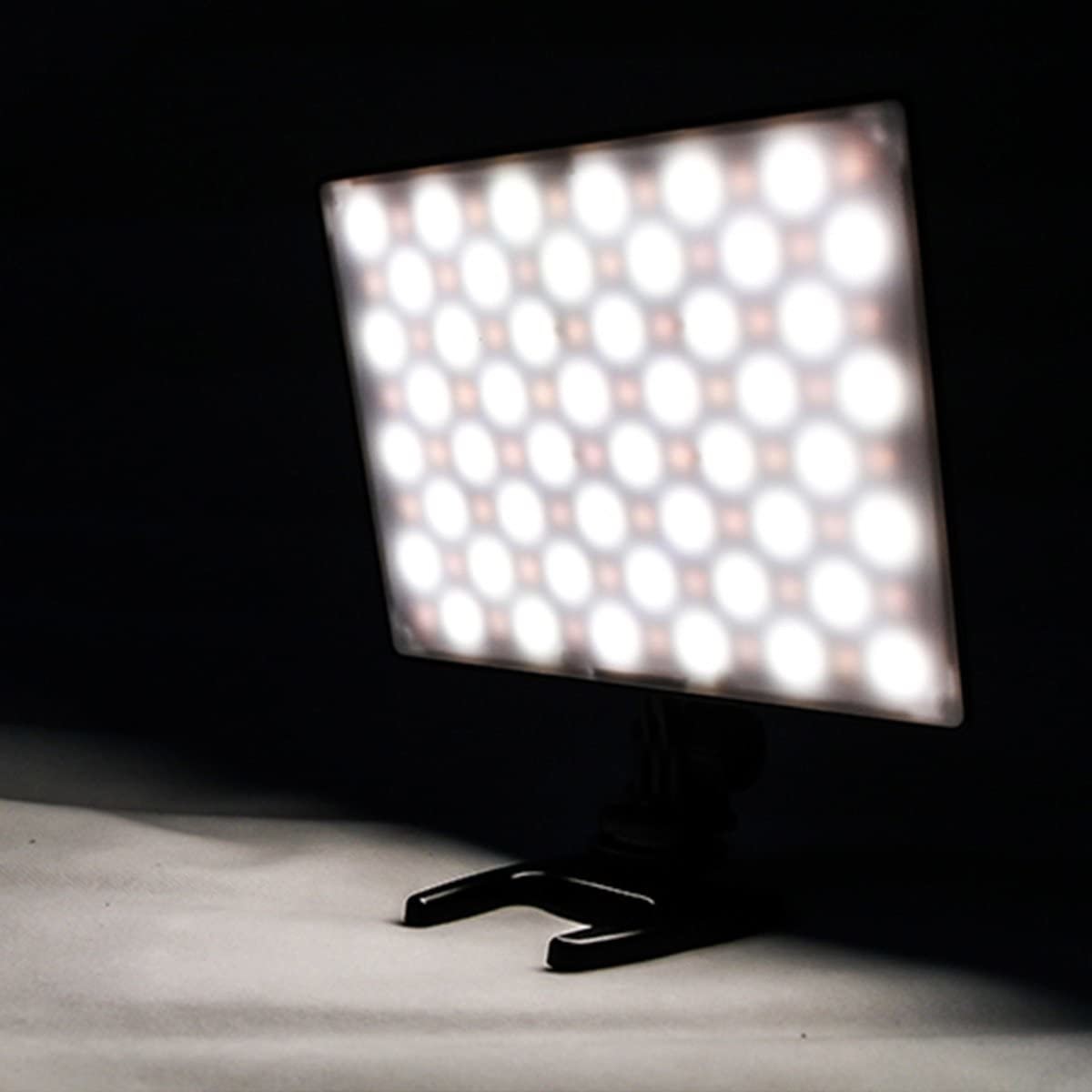
Halfway between the torch and the focus, since it can be placed on the camera’s hot shoe or the ground, the Yongnuo Yn300 Air Pro ( 29 euros ) delivers a fairly uniform soft light that illuminates the nearby environment, with the possibility of being able to tilt it It is powered by both battery and mains and it is possible to change the color temperature of its 48 LEDs from 3200K to 5500K
Elgato Key Light Air
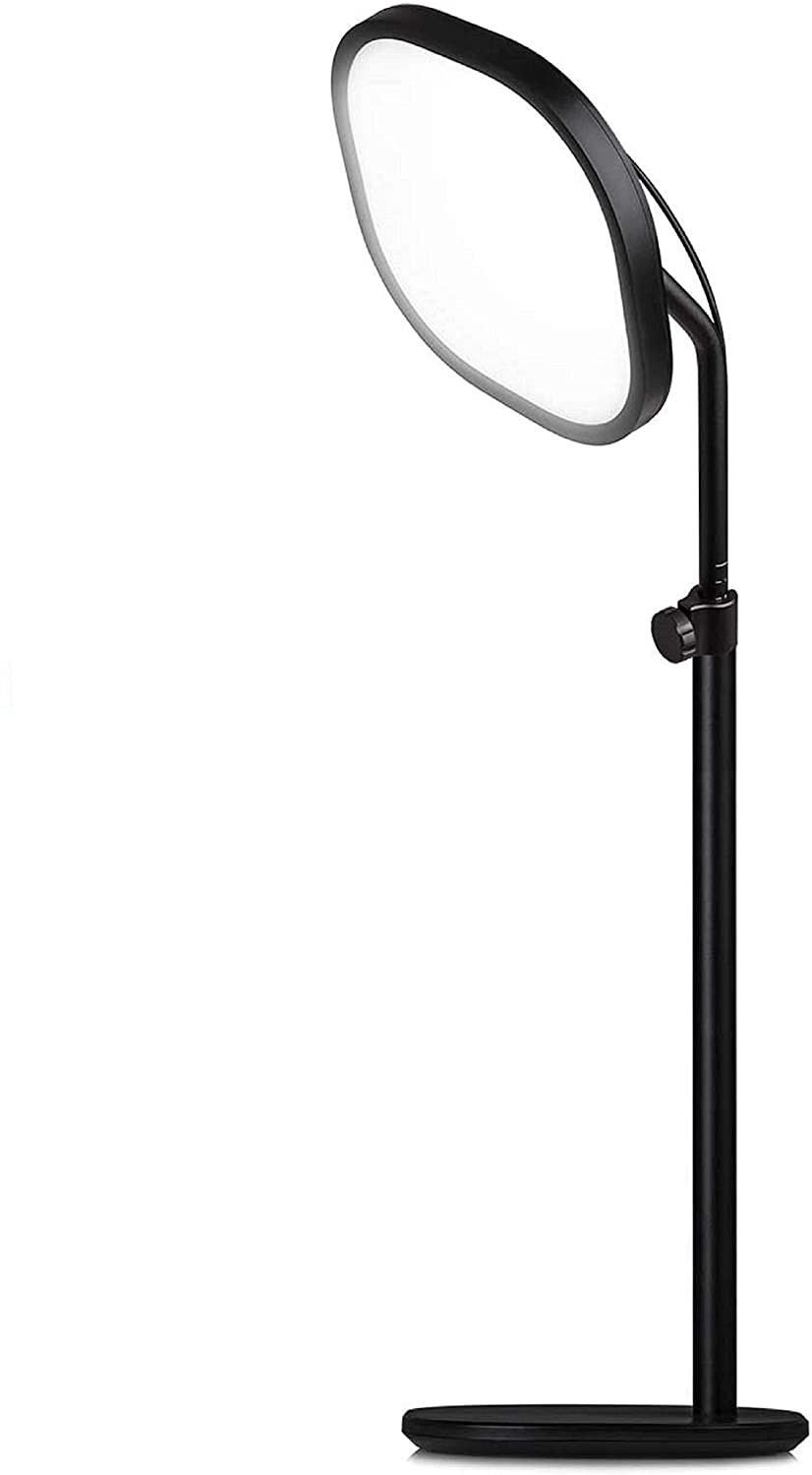
It is the quintessential LED spotlight for streamers, it is small and light, which makes it easy to handle, a feature reinforced with its control from the application.
Despite how compact it is, it integrates 80 quality Osram LEDs to play with color in a wide range from 2900 to 7000K. It’s not cheap, but if you’re going to shoot video frequently, it’s a great buy if you don’t want to mess around
Torches
Just as ring lights are gadgets born at the dawn of mobile photography, torches are older devices that are mounted on cameras to illuminate while taking photos or recording.
They offer a powerful point of light… and that is a double-edged sword. They can get you out of a bind in places where there is low or almost no lighting, but it is too aggressive that it casts a lot of shadows.
Among its advantages is that they are small and portable, which allows us to take them with us wherever we record. In addition, since they are fixed on the camera, they are used for recording on the move, for example, to record someone who is moving and must always be well-lit.
They are used to record indoors (or outdoors in low light), but also to decorate scenes or create reflections. Due to their type of concentrated lighting, they are not valid for lighting a room.
ESDDI
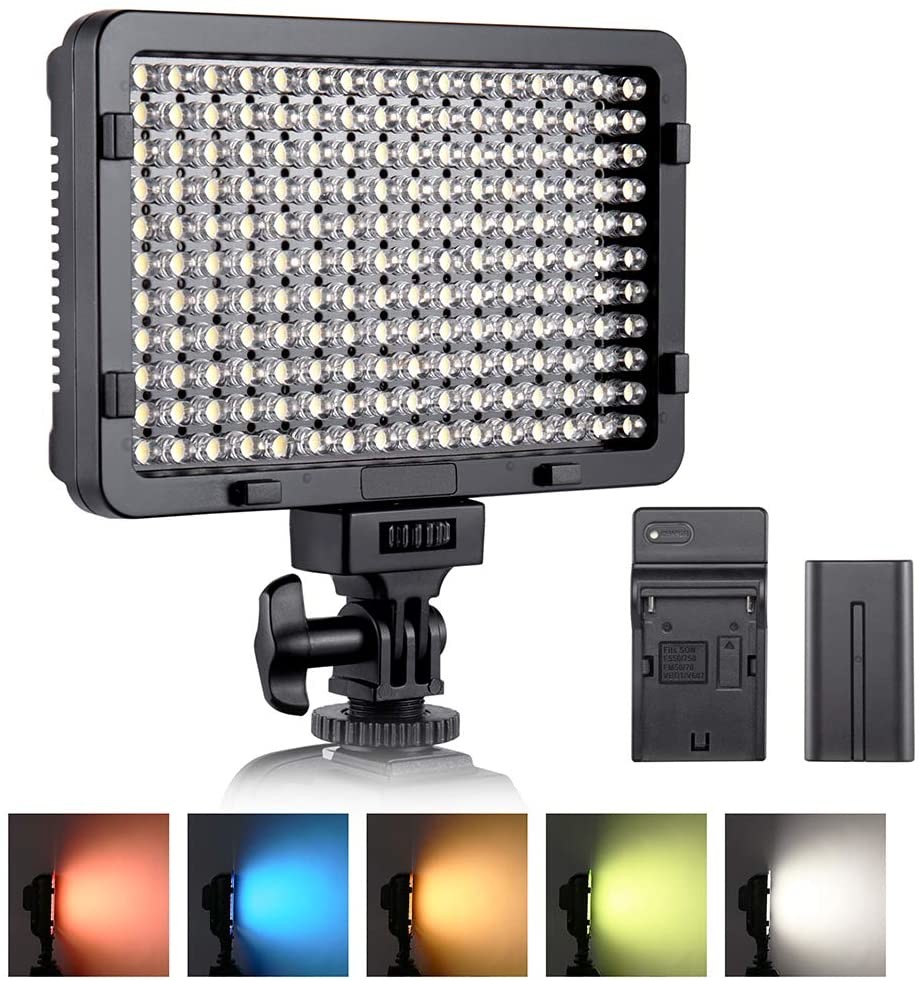
This ESDDI torch ( 33 euros ) stands out for its features at a reasonable price. It has 176 adjustable LEDs that we can adjust to temperatures between 3200 and 5600K, with five color filters. It is powered by its battery and comes with a charger included.
Neewer
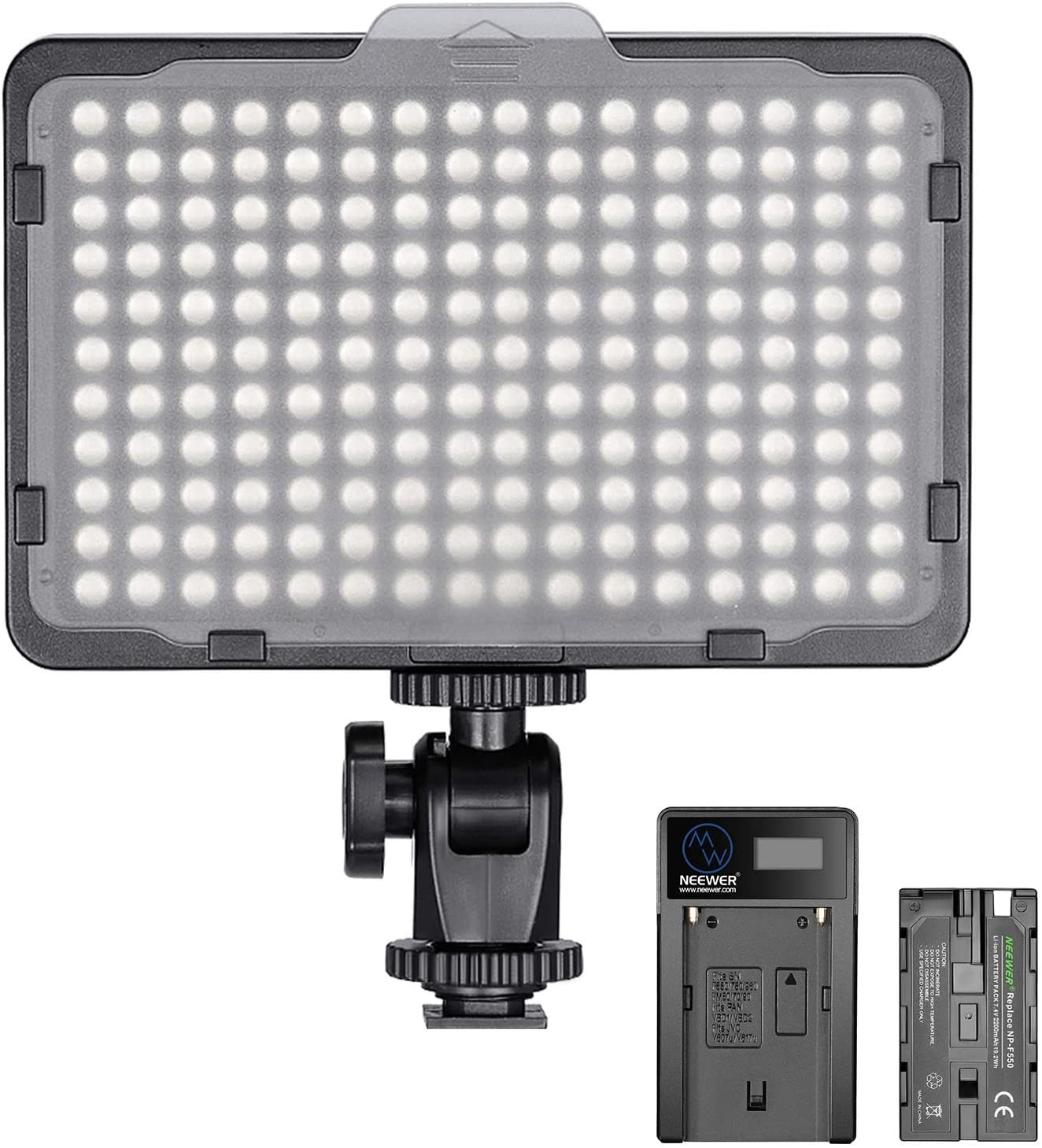
This Neewer kit ( 42 euros ) is very similar to the previous one, also with 176 LEDs, adjustable brightness, and a light temperature of 5600K. It is powered by its battery, includes two filters, and is suitable for SLRs from the main manufacturers.
Moman Fillipo
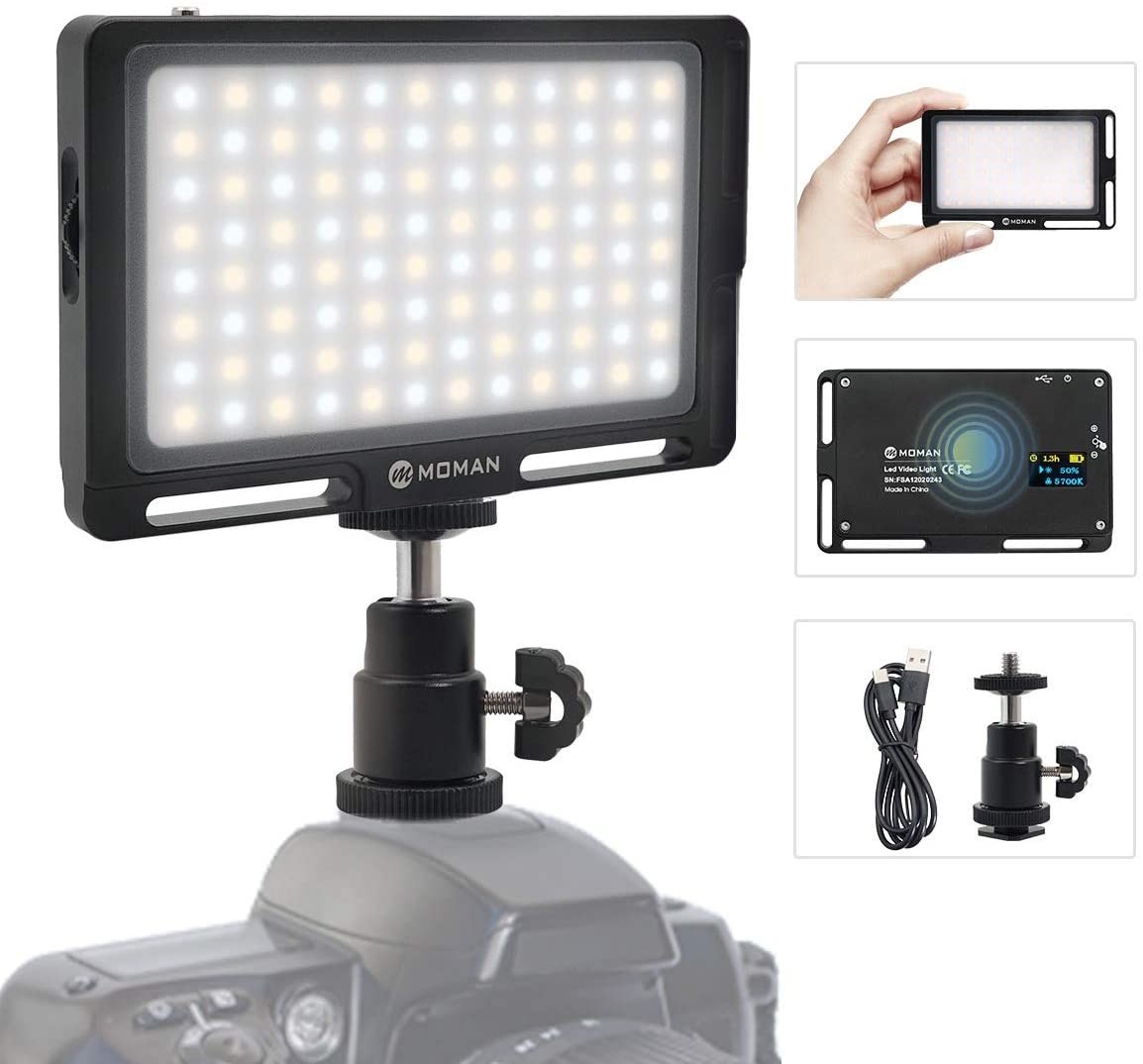
This one from Moman ( 49 euros ) stands out for how light and compact it is (4.7″ and 147 grams) and its wide spectrum of temperatures, since it ranges from 3000 to 6500K. To make using it more intuitive, it has a small panel to control power, brightness, and temperature.
Lighting kits
The most ambitious, versatile, and professional option is a lighting kit. We can buy kits with a single point of light, but ideally, they should have at least two, with three being canonical: the main one, the filler, and the backlight, although it is by no means the only scheme and it will always depend on what we look for (and the budget).
-
The main light has the mission of being the reference, the one that illuminates the most. It also marks the intensity and color temperature. Although all lights should be soft, if there is one with “authority” to be the hardest, that is the main one.
-
The fill light is placed on the opposite side of the main light and the axis is bounded by the subject and the recording device. Its mission is to mitigate the shadows generated by the main one, but without losing the sensation of volume. An alternative to this light is to use a reflector.
-
The backlight goes behind the subject, positioned above, separating the subject from the background, defining profiles, and creating volume.
-
An additional point of light is the backlight, soft lighting that has the objective of ambiance without diminishing the prominence of the subject.
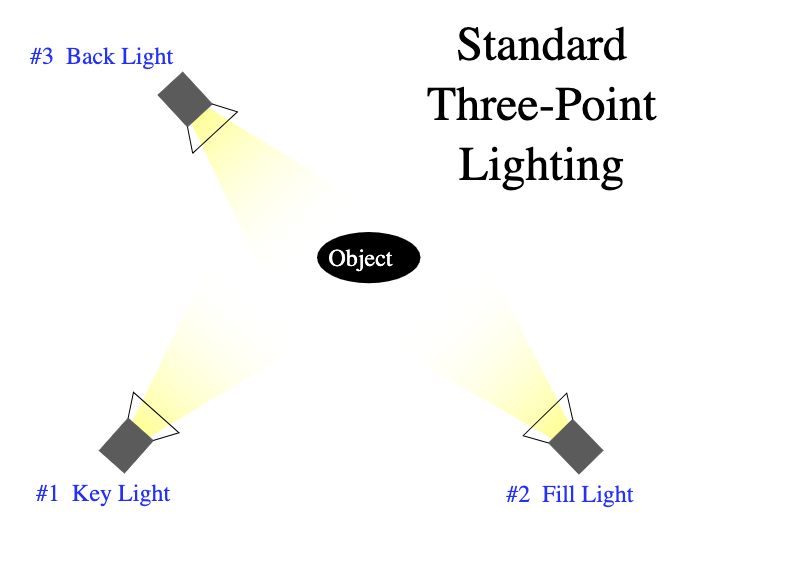
As for the element that is going to illuminate, we are going to find essentially two types: LED panels and fluorescent bulbs, the latter being the cheapest.
If the user is going to be regular, it is worth investing a little more and betting on LED panels, which, in addition to allowing you to regulate the intensity of the light and change the color temperature, consume very little and do not generate heat. These LED panels are made up of a combination of mini LED bulbs (like the LED spotlights we have seen above) but how many are enough? About 600 LEDs should suffice for a studio set up in a room.
In case you can’t change the temperature of the light point, something that happens in the most affordable LED bulbs and panels, go for those that offer a temperature of 5500K, which is the temperature of natural light, as well You can play with the lighting that enters through the windows.
In practice, the “spotlight” will be composed of a bulb (or LED panel) in a softbox that wraps around it to achieve a softer, more diffused, and directional light and finally, a tripod, so that we can adjust both the height and the position and inclination. It is also common for it to include filters and bags to store everything.
The good thing is that you can choose practically everything: the number, tone, and power of the light points, play with the position and height… which allows them to cover the spectrum of use for indoor video recording and photography, with special emphasis on the creation of a recording studio and product photography.
Of course, in return we require more space, the assembly is considerably more complex and they are not so easy and comfortable to move. You can practically do magic with light – depending on the results – but if you are just starting, dealing with it can be complicated.
Although we can find fairly cheap lighting kits, all that glitters is not gold. And it is that the light may not be up to expectations in terms of quality, tone, and power, falling short if we want it, for example, to illuminate a room.
Intey
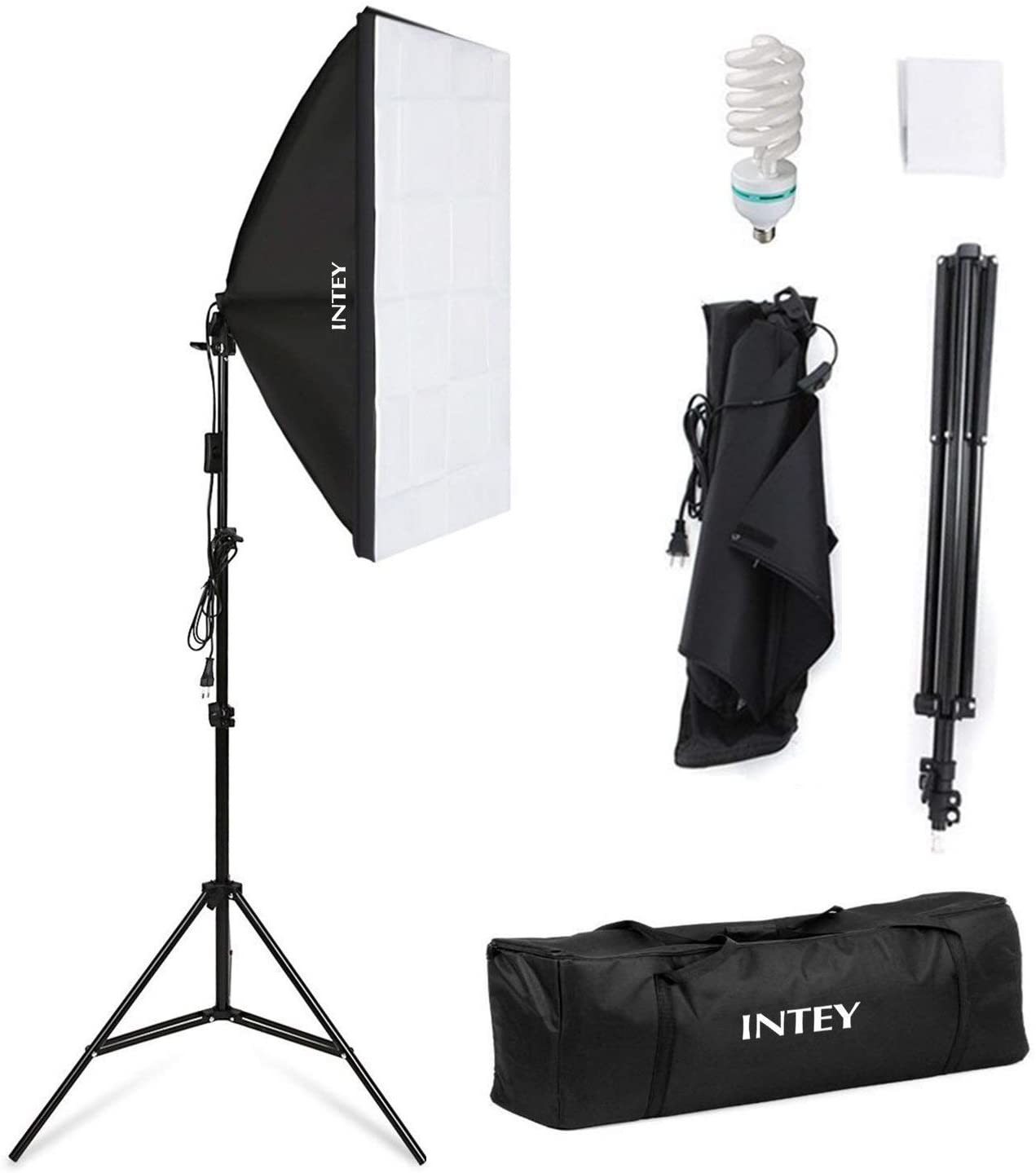
This Intey kit ( 41.99 euros ) is very simple and affordable, consisting only of a lighting point with a 135W continuous light bulb in a 50x70cm softbox. Comes with a tripod and storage bag
Amzdeal
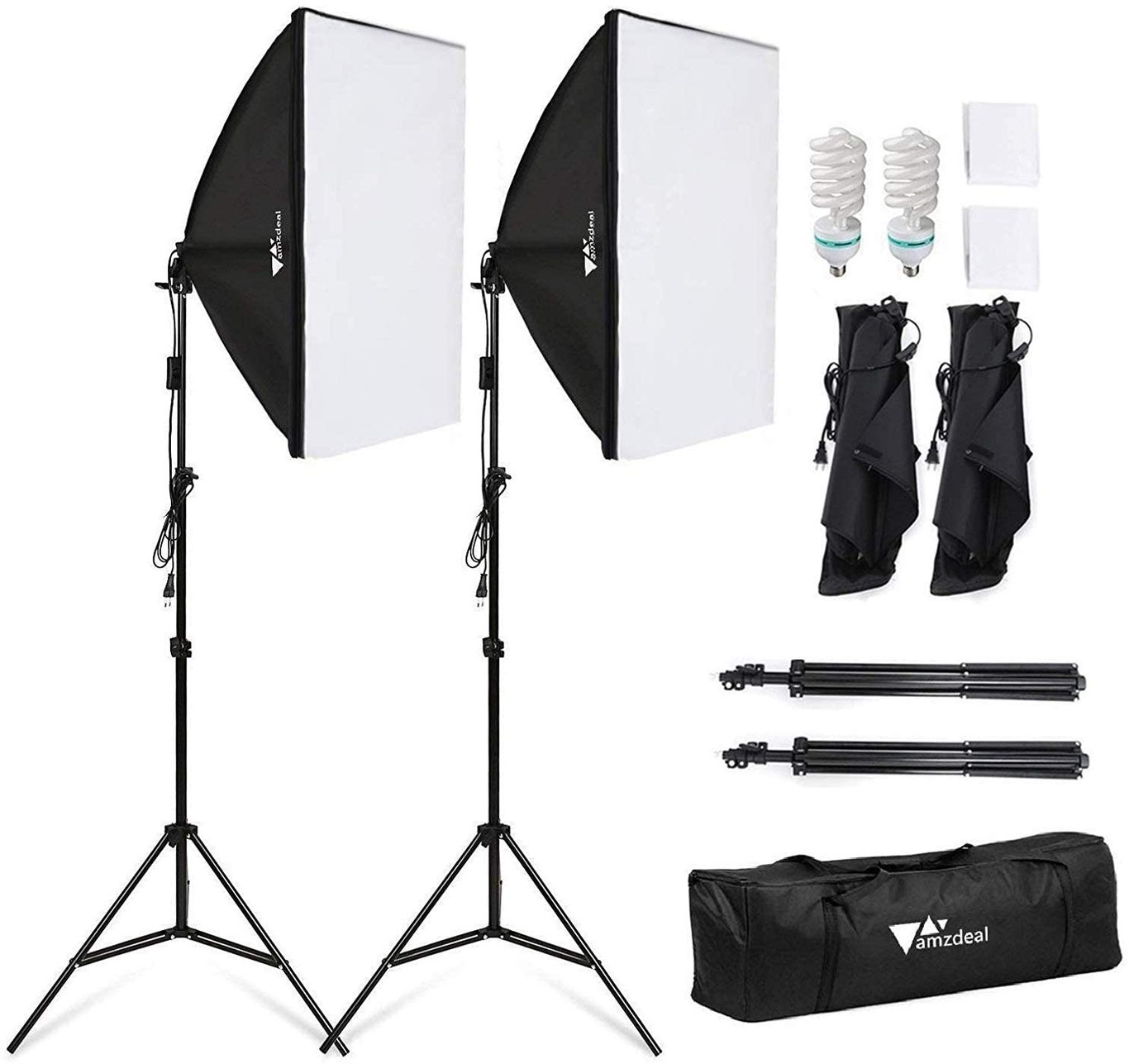
The one from Amzdeal ( 70 euros ) follows in the wake of the simplicity of the previous one, only with a setup made up of two softboxes with 135W uniform light bulbs and an adjustable tripod with an easy-to-assemble structure.
Andoer
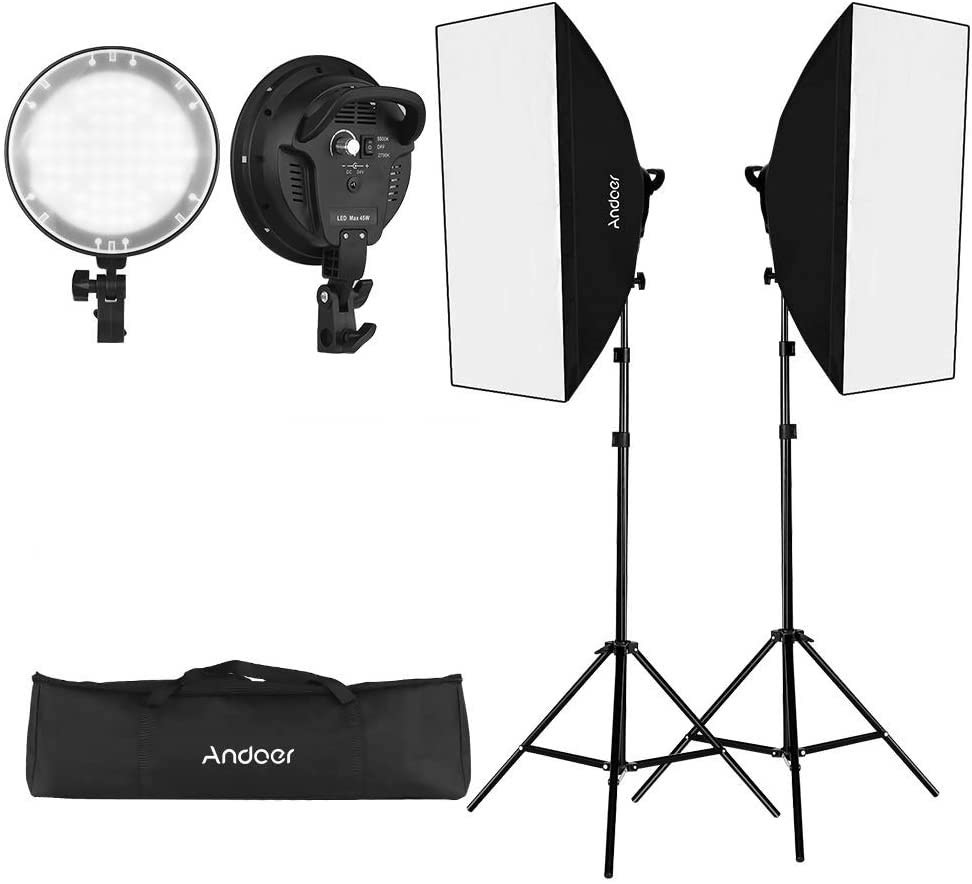
The Andoer kit ( 87.99 euros ) includes two softboxes with a 45W bulb and its corresponding tripod with an LED spotlight to have more options, as well as cables and a bag, thus offering a setup suitable for both close-ups and lighting a stay. And if you are not convinced, it is available in other configurations
Neewer
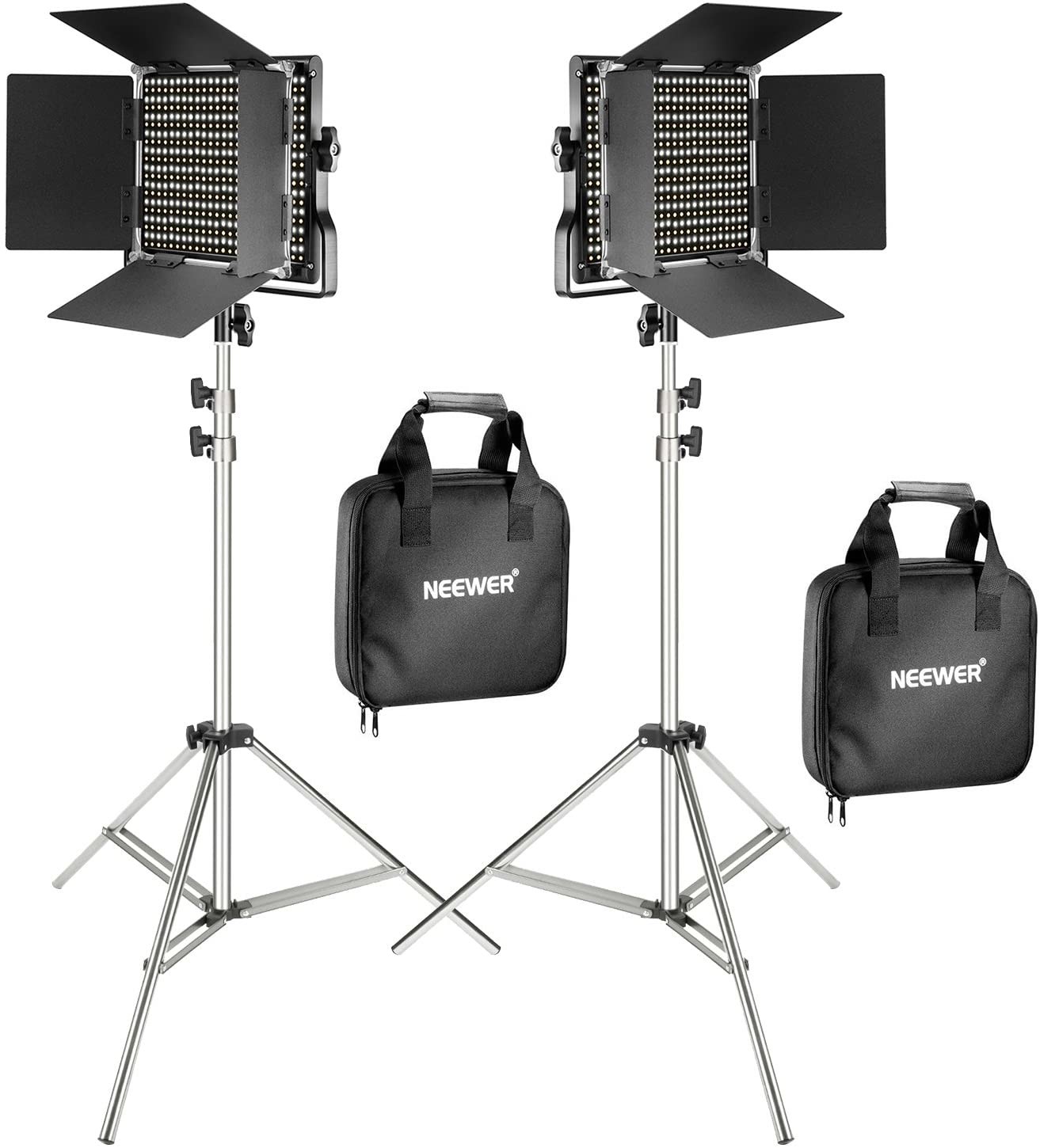
This Neewer kit ( 191 euros ) stands out both for the care and robustness of the tripods and for the quality and versatility of the LED panels, with 660 white and yellow units capable of delivering powerful lighting at temperatures ranging from 3200 to 5600K.

Sharlene Meriel is an avid gamer with a knack for technology. He has been writing about the latest technologies for the past 5 years. His contribution in technology journalism has been noteworthy. He is also a day trader with interest in the Forex market.










